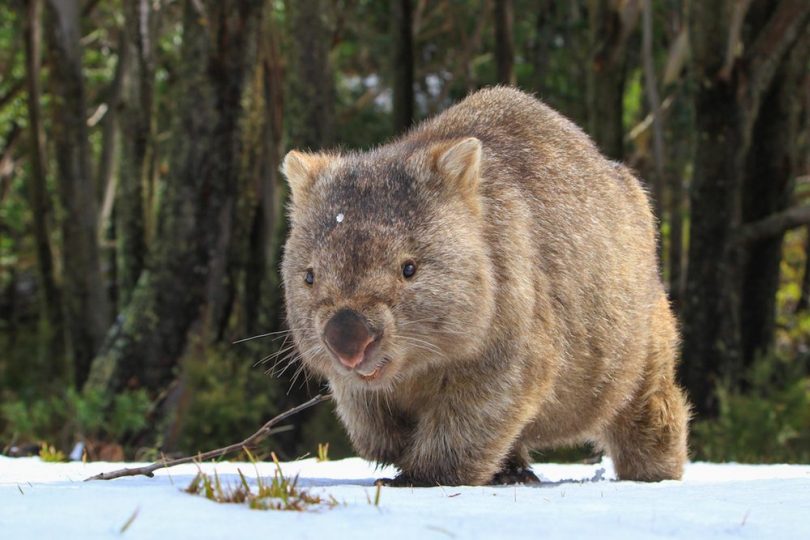The Snow Wombat
Are you a fan of cute, furry animals? If so, you'll undoubtedly fall in love with the snow wombat. These adorable creatures are native to the Snowy Mountains region of New South Wales, Australia, and are known for their round, furry bodies and lovable personalities. But there's more to the snow wombat than just their cuteness.
Challenges Facing the Snow Wombat
The snow wombat faces a number of challenges in its native habitat. For one, their habitat is being threatened by climate change, which is causing the snow cover to melt earlier and earlier each year. Additionally, the snow wombat is often hunted by predators such as feral cats and foxes. Finally, their habitat is being encroached upon by human development, which can cause stress and disturbance to the snow wombat population.
The Target of the Snow Wombat
The target of the snow wombat is to survive in its harsh and changing environment. Despite the challenges they face, the snow wombat has adapted to their surroundings over time, relying on their thick fur coats and burrowing abilities to stay warm and safe.
Summary of Main Points
Overall, the snow wombat is a unique and beloved creature. While it faces a number of challenges related to climate change, human development, and predation, it remains a resilient and adaptable species that is worth preserving. As we continue to learn more about the snow wombat and its unique habitat, we can work to protect these animals and ensure that they have a safe and secure future.
Personal Experience with the Snow Wombat
The first time I saw a snow wombat, I was struck by how adorable and friendly it seemed. Its round body and fluffy fur made it look like a living teddy bear, and I couldn't help but feel a connection to the animal. Over time, I've come to appreciate the resilience and adaptability of the snow wombat, as well as the unique challenges it faces in its harsh environment.

Conservation Efforts for the Snow Wombat
Fortunately, there are a number of conservation efforts underway to protect the snow wombat and its habitat. These efforts include measures to reduce human impact on the Snowy Mountains region, as well as programs to monitor and manage predator populations. Additionally, there is ongoing research into the effects of climate change on the snow wombat, which could help inform future conservation efforts.

Why the Snow Wombat is Important
The snow wombat is an important species for a number of reasons. First and foremost, it serves as an important indicator of the health of the Snowy Mountains region. By monitoring the snow wombat population, we can gain insights into the overall health of the ecosystem, which in turn can help inform conservation efforts. Additionally, the snow wombat is an important cultural and ecological symbol, representing the unique biodiversity of the region and its importance to the people who live there.
Predator Control for the Snow Wombat
Predator control is one of the key conservation strategies being used to protect the snow wombat. By reducing the populations of feral cats and foxes, we can help prevent these predators from hunting and killing the snow wombat. This can be achieved through a number of methods, including trapping, poisoning, and shooting.
Question and Answer
Q: What do snow wombats eat?
A: Snow wombats primarily eat grasses, herbs, and other vegetation found in their native habitat.
Q: How do snow wombats stay warm in the winter?
A: Snow wombats have thick fur coats that help insulate them from the cold. Additionally, they burrow into the snow or soil to keep warm.
Q: Why are snow wombats important to the Snowy Mountains ecosystem?
A: Snow wombats are important indicators of the health of the Snowy Mountains region. By monitoring their population, we can gain insight into the overall health of the ecosystem and take steps to protect it.
Q: How can I help protect the snow wombat?
A: There are a number of ways to help protect the snow wombat, including supporting conservation organizations, participating in citizen science efforts, and reducing your environmental impact on the Snowy Mountains region.
Conclusion of the Snow Wombat
The snow wombat is a unique and beloved species that faces a number of challenges in its native habitat. By understanding its target, challenges, and importance to the ecosystem, we can work to protect the snow wombat and ensure that it has a secure future.
Gallery
The Snow Wombat - Susannah Chambers, Illustrated By Mark Jackson
Photo Credit by: bing.com / wombat snow book books children australian story chambers cbca susannah winter kids jackson mark cover snowy review australia his biome
Pin By Grungeprincess On Just Too Cute | Cute Animals, Cute Wombat

Photo Credit by: bing.com / wombat wombats buller creatures toothpick haggin antony regard lovecuteanimals pixdaus
Wombat In The Snow, Snowy Mountains, New South Wales, Australia

Photo Credit by: bing.com / snowy wombat australian
Photo Comp Winners Give Us A 'wild Eye' On Local Environment

Photo Credit by: bing.com / snow wombat winners environment comp wild give eye local
Wombat Eating In The Snow - Tasmania 360
Photo Credit by: bing.com / wombat snow eating food